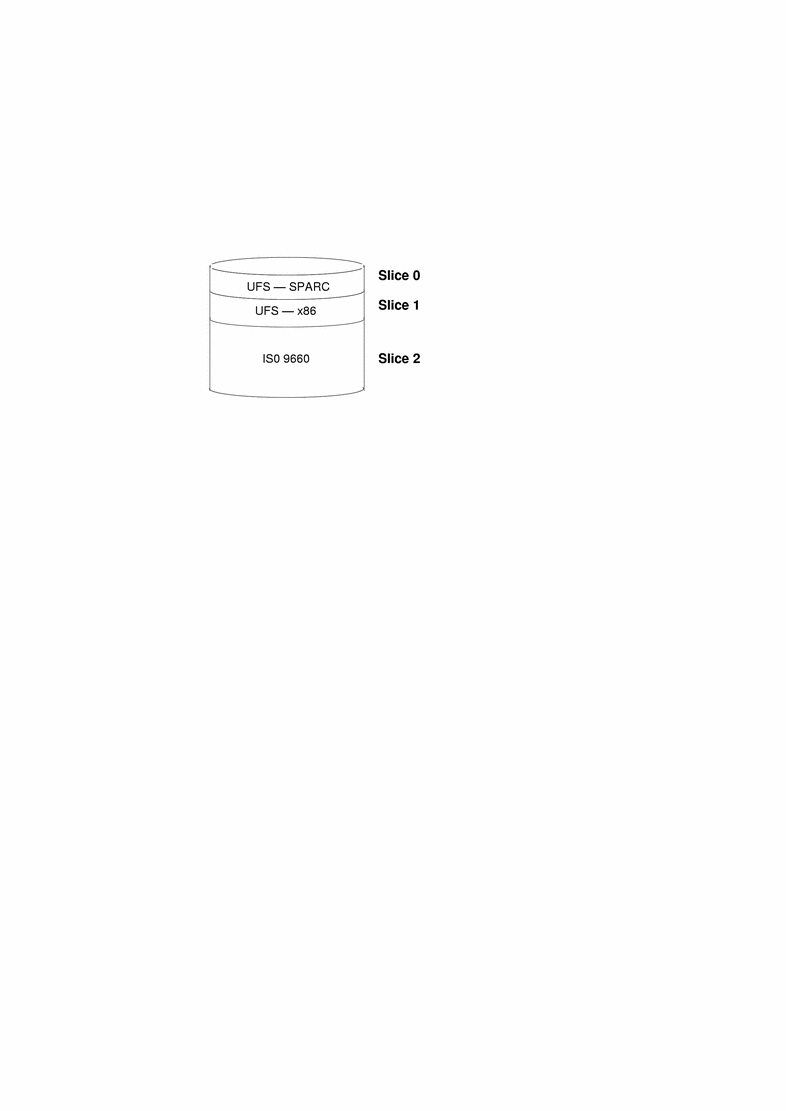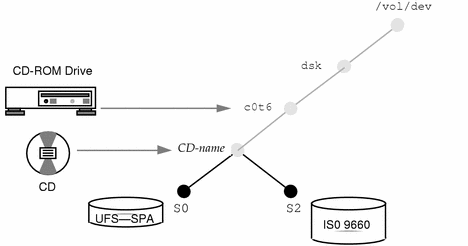Volume Management Can Be Limited by UFS Formats
UFS formats are not portable between architectures, so they must be used on the architecture for which they were formatted. For instance, a UFS CD formatted for a SPARC platform cannot be recognized by an x86 platform. Likewise, an x86 UFS CD cannot be mounted by Volume Management on a SPARC platform. The same limitation applies to diskettes. (Actually, some architectures share the same bit structure, so occasionally a UFS format specific to one architecture will be recognized by another architecture, but the UFS file system structure was not designed to guarantee this compatibility).
Therefore, Volume Management cannot recognize and mount x86 UFS media on a SPARC platform--or SPARC UFS media on an x86 platform.
Most CDs are formatted according to the ISO 9660 standard (High Sierra File System--HSFS), which imposes no limitations on Volume Management, so incompatibility is seldom a problem with CDs.
With diskettes, UFS incompatibility can occur more often because formats can be established by the user. Be aware that if you format a UFS diskette on one architecture, you won't be able to use it on a different architecture. (For instructions, see "How to Format a UFS Diskette").
What About Mixed Formats?
Some CDs, particularly installation CDs, contain mixed formats; that is, part UFS, part ISO 9660. To accommodate the different formats, the CD is split into slices, which are similar in effect to partitions on hard disks. The 9660 portion is portable, but the UFS portion is architecture-specific. Furthermore, to make the CD usable by several different architectures (as in the case of installation, when different PROM architectures might be used to boot the system), more than one UFS format is loaded onto the CD:

When Volume Management encounters this arrangement, it simply ignores the UFS formats not specific to the local system's architecture and mounts the appropriate UFS slice and the ISO 9660 slice:

These slices appear as subdirectories both under /vol/dev/dsk/c0t6 and /cdrom/cdrom0:
$ ls /cdrom/cdrom0 S0 S2 $ ls /vol/dev/dsk/c0t6 S0 S2 |
- © 2010, Oracle Corporation and/or its affiliates
